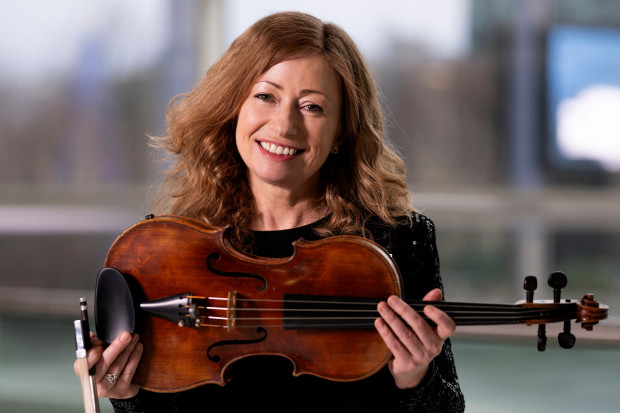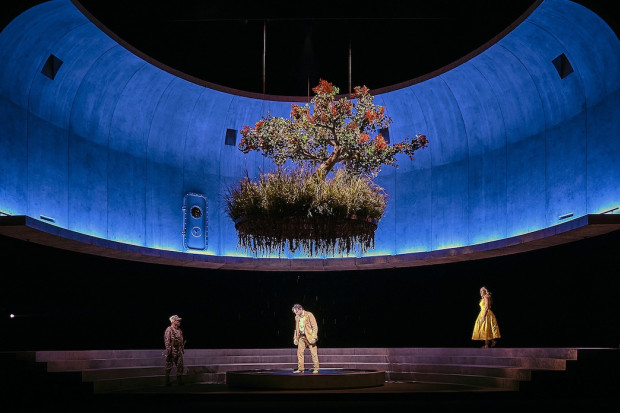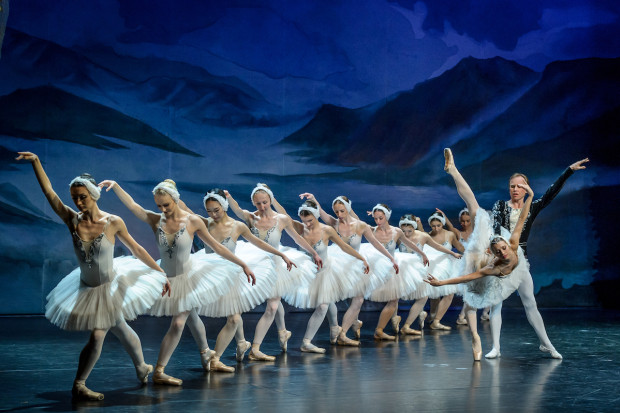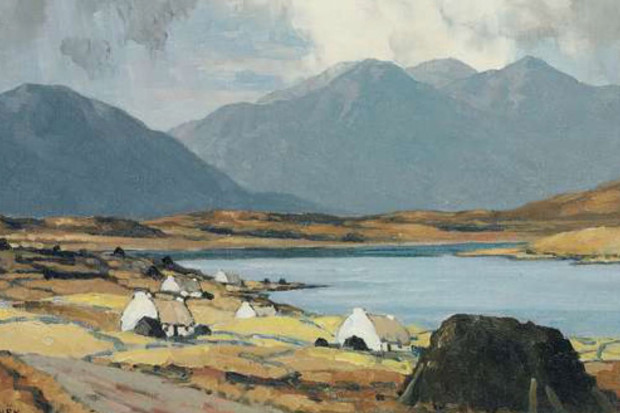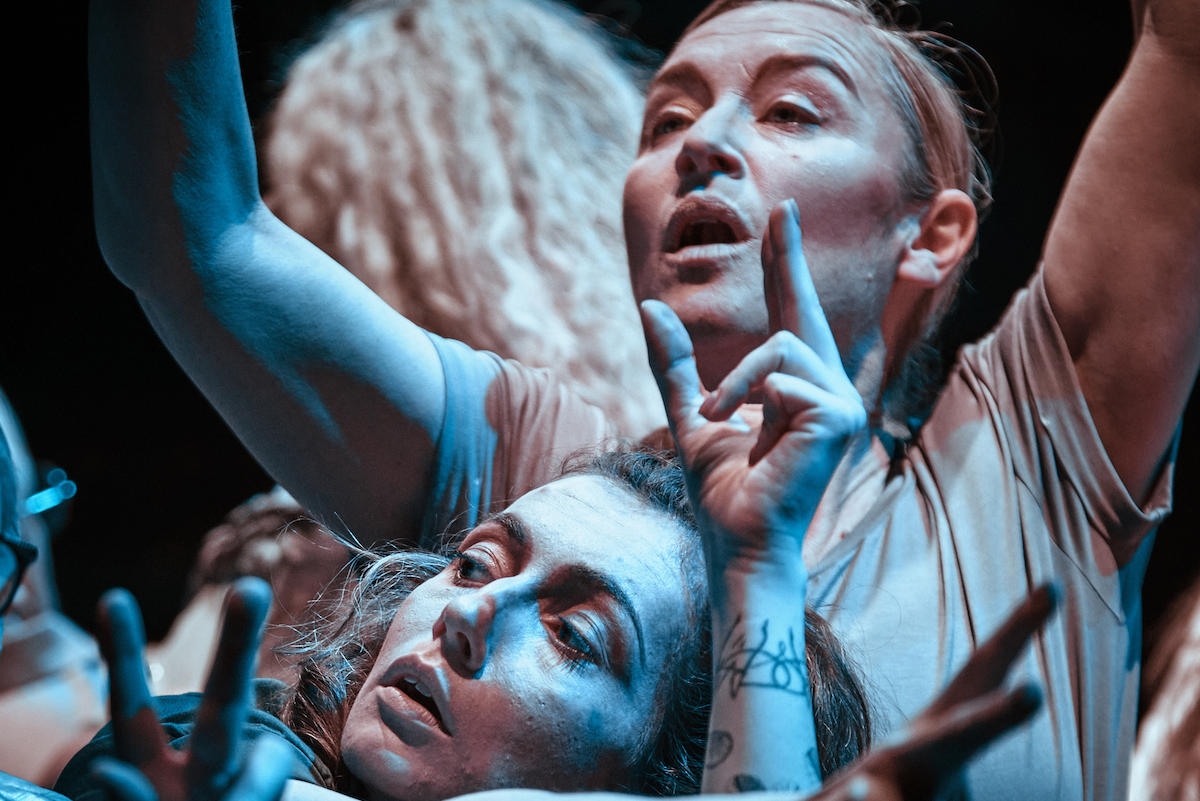
Possession (Photo: Patricio Cassinoni)
A Fight for Power and Wealth: 'Possession' at the Project Arts Centre
Despite having become deaf at the age of 19, Waterford-born writer Teresa Deevy (1894–1963) managed to carve out a relatively successful career for herself with many of her plays being regularly staged at the Abbey throughout the 1930s and 40s. Since the Waking the Feminists revolution in Irish theatre, her work has been receiving renewed attention as part of the movement’s focus on marginalised or neglected female voices in Irish literature. Much of this has been spearheaded by academics Dr Úna Kealy and Dr Kate McCarthy at the South East Technological University (SETU), deaf artists Alvean Jones and Lianne Quigley and the visual artist Amanda Coogan.
Despite her prominence at the Abbey, Deevy’s manuscript for a ballet on the subject of the Táin epic entitled Possession had never been staged until this interpretation by Coogan at the Project Arts Centre. The production marked the continuation of Coogan’s creative research into Deevy’s work, which has included a reimagining of her one-act play The King of Spain’s Daughter for Irish Sign Language (ISL), and The Possession Project, an installation at the Hugh Lane Gallery in 2022 that focused on the female body and the work of marginalised female artists. As with the former, this show was a collaboration with the Dublin Theatre of the Deaf (DTD) who specialise in the production of plays using ISL, and featured music by Linda Buckley performed by an ensemble consisting of Suzanne Savage (vocals), Kate Ellis (cello), Matthew Jacobson (drums) and the composer herself on electronics and flute.
While most people will probably associate the Táin myth with the very masculine exploits of Cú Chulainn and the endless slaying of champions in single combat at the ford, this production sought to decentre the story by placing the focus on Queen Medb. Jealous of her husband’s possession of the prolifically fertile bull Finnbhennach, the proud and haughty Queen of Connaught sets out to possess the Donn Cuailnge (the brown bull of Cooley) so that she can match her husband’s wealth. The ensuing war with Ulster that this precipitates leads ultimately to the death of the two animals who fight each other at the epic’s conclusion.
Although advertised as an opera, the production better fitted Deevy’s own identification of the work in her manuscript as a ballet with the only singing part being undertaken by Savage who mostly remained part of the accompanying ensemble. Those familiar with Coogan’s work will have recognised some of her signature motifs as the theatre’s auditorium was transformed into an otherworldly space with multicoloured cloths draped around the sides while the audience flanked a central nave where the action took place.

Amanda Coogan in Possession (Photo: Patricio Cassinoni)
Movement and gesture
Instead of conventional opera, the members of the DTD performed a series of choreographed scenes utilising movement and gesture. These ranged from quite static tableaux such as at the beginning where the actors grouped together and waved their arms resembling the swaying of branches to more processional-type movements employing the unraveling of lengthy cloth and the waving of flags. While these were superbly executed by the members of the DTD, they did come across as being quite abstract and difficult to piece together into any coherent narrative concerning Queen Medb. It was also far from clear as to who any of the characters were as most of the cast wore similar costumes and no one member of the cast was clearly identifiable as Medb herself. The pace of transition between scenes was glacial and Buckley’s music tended towards broad-brush washes of electronic sounds on which the instruments of the ensemble added atmospheric improvisations. While the non-vibrato singing of Savage was crystal clear, the individual words of Deevy’s libretto were difficult to make out due to the stretched out nature of the vocal lines. The overall stasis meant that the production did drag slightly as it passed the hour mark.
However, the last fifteen minutes witnessed an extraordinary turnaround. In an abrupt breaking of the fourth wall, three of the performers ran around with placards informing the audience of the impending fight between the two bulls. This was duly acted out with terrific commitment by two of the performers who locked into a deadly grip while Buckley’s music found a different gear to generate an emotive finale. That this gladiatorial conclusion seemed wholly out of step with the preceding hour didn’t seem to matter and a palpable energy reverberated around the theatre at the finish.
While the accompanying programme notes invited the audience to consider how Possession meditated on big themes such as ambition, power, human suffering and the place of women in society, I have to admit that most of these were somewhat eclipsed by the curious nature of the production’s dramatic pacing. Nevertheless, for what the show lacked in dramatic coherence, it made up for in visuals and it was perhaps the staging, costumes and movement of the actors that left the strongest impression.
Visit www.amandacoogan.com.
Subscribe to our newsletter.
Published on 29 February 2024
Adrian Smith is Lecturer in Musicology at TU Dublin Conservatoire.










